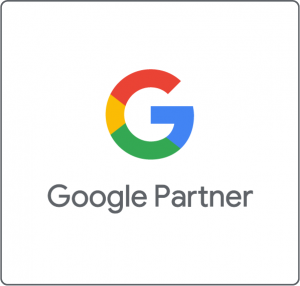It’s the question that will drive the next 15-20 years of advertising: “how do we reach Gen Z?”
Generation Z—or those born between 1997 and 2012—has arrived on the scene, and marketers would be wise to start paying attention to this new generation. More racially and ethnically diverse than any previous generation, Gen Z is entering adulthood as digital natives, never truly knowing a world before the Internet, smartphones, or social media.
Projected to become America’s largest generation by 2034 and with an estimated spending power of over $140 billion per year (and growing), it’s critical that advertisers start developing the strategies they need to reach and appeal to this remarkable generation.
Do Good, and You Will Do Well
Most Gen Z consumers say they want brands to share their values, follow ethical standards, and do good for the world. More than two-thirds of Zoomers “expect brands to contribute to society,” and 61% say they would pay more for products that are produced in an ethical and sustainable way. This can’t just be window dressing-type stuff, either—it takes more than updating the banner image on your social media profile to, say, a Pride-themed logo every June to demonstrate your values. Gen Z is too digitally-savvy for anything that’s purely superficial, and they will call you out on our own feeds if they smell something inauthentic (or worse, if they can prove ideological inconsistencies or contradictions).
What’s more, demonstrating a commitment to these values will help your brand stand out from the crowd: a recent study found that only 39% of brands are trusted in North America and 71% of consumers have “little faith” that brands will deliver on their promises. At the same time, 64% of all consumers say they prefer buying from companies with a reputation for purpose as well as profit, and more than half are willing to pay more for a brand that takes a stand. Don’t just espouse values in ads and tweets—instead, demonstrate your commitment to them by taking action. Do that, and reap the benefits—especially with Gen Z.
 Gen Z is Privacy-Minded
Gen Z is Privacy-Minded
Generally speaking, Gen Z isn’t crazy about sharing their personal information. Less than one-third of teens say they are comfortable disclosing anything other than contact information and purchase history. As the first generation of true digital natives, there is no naivety among Gen Z when it comes to data collection: they know you’re collecting it, and they know that you’re using it.
To the extent that they can, Gen Z users are taking control of their data and personal information, with a majority (58%) of individuals age 18-24 saying they have adjusted their social media privacy settings. Meanwhile, 61% said they would feel better about sharing personal information with brands if they could trust it was being protected and stored securely.
What can companies do to address these concerns? As it turns out, the real key to data privacy and Gen Z may just be as simple as transparency.
Nearly two-thirds (64%) of individuals ages 13-24 globally say it’s fine for companies to collect data about them as long as they are being transparent about what they’re doing. However, a remarkable 91% of Gen Z believes it’s a human right to know what information companies are holding about them. The last thing a brand should do is play games (or worse, be cavalier or careless) with something that virtually an entire generation of young adults believe to be a human right. The lesson: be upfront and transparent about your company’s data usage and respectful of the end user at every step of the data process.
Gen Z, Influencers and Social Media
When you think “Gen Z” and “Social Media,” your next thought is probably one word: TikTok.
Yes, the China-based app that survived near-banishment in the U.S. is indeed growing larger by the day, driven in no small part by its popularity among Gen Z. By the end of 2021, TikTok will pass Instagram in terms of U.S. Generation Z users, and it is expected to catch Snapchat as the favorite app of Zoomers by 2025.
Why does the micro-video app resonate so strongly with Gen Z? Perhaps due to its ability to create and sustain influencers, which is very much in line with this generation’s approach to the platform. Research shows that Gen Z tends to use social media to learn from influencers, not to showcase their own high-class lifestyles (à la Millennials), and 70% of Zoomers follow at least one influencer on platforms like YouTube, Instagram, or TikTok.
The influencer effect has had a direct impact on spending. Nearly 40% of adult Zoomers (ages 18 to 23) say their purchasing decisions are most influenced by social media, while almost half (44%) the members of Generation Z have made a purchase decision based on a recommendation from a social influencer, compared to 26% of the general population. Clearly, incorporating influencer marketing into your overall social media advertising efforts could be a good way of reaching targeted Gen Z audiences.
TV? What’s TV?
Where does Gen Z turn to get its entertainment, and how can advertisers connect with them?
Among Gen Z, “playing video games” was their favorite entertainment activity (26%), followed by “listening to music” (14%), “browsing the internet” (12%), and “engaging on social platforms” (11%). Notably, only 10% of Generation Z said that “watching TV or movies at home”—the top choice of Boomers, Gen X and Millennials—was their favorite form of entertainment.
What brings together all of these activities? Yep: they’re all forms of digital media. And it’s not that they’re cord cutters, either—after all, for Gen Z, there were never even any cords to cut.
The Importance of Ad-supported Platforms
Across the spectrum of entertainment services—be it streaming video, music, or gaming—users said they were far more likely to cancel because of a price increase than an increase in the amount of advertising on the service. Among respondents to a recent survey, nearly half of all consumers said that low price was the most important factor in deciding to subscribe to a new paid streaming video service. As you might expect, this sensitivity to cost has prompted people to seek out more cheap/free ad-supported options, with 55% of survey respondents saying they use at least one free, ad-supported video service.
In this type of environment, ads (and advertisers/marketers) are a crucial part of keeping content/digital media accessible to streaming audiences—particularly for Gen Z. This is also likely to lead to more CTV and programmatic advertising opportunities for marketers, not to mention a huge opportunity in the world of video games/gaming.
Video Games/Gaming
Speaking of video games, according to a recent survey, 87% of Generation Z said they play video games at least once a week. It’s also more than just a form of entertainment—most Generation Z respondents said that during the pandemic, video games helped them stay connected to other people and get through difficult times.
Researchers estimate that U.S. mobile game ad revenues will increase 17% in 2021 to $4.79 billion, up from just $2.29 billion in 2018. U.S. Esports ad revenue is projected to increase by 12% to $215.9 million, up nearly 50% from 2018, and U.S. gaming video content ad revenues are estimated to grow an astonishing 32% this year to $2.27 billion, more than double where they were in 2018.
A recent report found that gamers are becoming more accepting of in-game ads, with sentiment toward banner ads and in-game video ads improving over the past year. Rewarded video ads—or ads that award players things like in-game currency or other items for watching—are even more popular, with 11% more U.S. gamers saying they “liked” these rewarded video ads compared with those who said they “can’t stand them.” And with Facebook announcing that it will soon begin running ads in VR games on its Oculus Quest headsets, the options for reaching this growing and coveted audience are only increasing.
Streaming Audio
The other dominant platform for Gen Z? Streaming music—one study showed that more than half of adults ages 18 to 29 listen to streaming music every day. Gen Z listens to an average of 18+ hours of audio a week, with much of that coming from streaming audio and podcasts. In the U.S., 27.8 million Zoomers listen to at least one podcast per month, with that number expected to surpass 40 million by 2024, and nearly 1/4 of all podcast consumers are now from Gen Z.
Comparable to how video games represent more to gamers than just entertainment, streaming audio means more to young adults than just background noise. A study found that 73% of Gen Z and Millennial Americans use audio to cope with stress and anxiety, and 54% of Zoomers say they’ve started listening to more podcasts to stay informed and entertained.
What does the world of audio advertising look like these days? Overall, U.S. digital audio ad spend is forecast to grow by 16% to hit $5.59 billion in 2021 and will grow to nearly $8 billion by 2025. Over $1 billion of those digital audio ad dollars will be via programmatic, accounting for nearly 20% of all digital radio ad spending, while programmatic digital audio ad spend is projected to hit $1.57 billion by 2023. As the number of Gen Z audio listeners continues to grow, so too (unsurprisingly) does the audio advertising market.
Advertising and the Gen Z Audience
Gen Z is on multiple connected platforms and devices, and with their growing buying power it’s critical to reach them where they are. Advertisers will need to stay nimble with this ever-increasing array of entertainment options—not to mention the generation’s penchant for hopping from one streaming platform to another, based on wherever they can find the latest content or the best deal. Embracing the power of both programmatic advertising and advertising automation can help marketers reach their audiences wherever they might be, whenever they might be there.
Whether it’s display, streaming video, audio, gaming, CTV or elsewhere, leaning on programmatic advertising and using automation to help streamline and optimize advertising efforts are some of the best tools advertisers have to reach Gen Z consumers in the years ahead.
—



